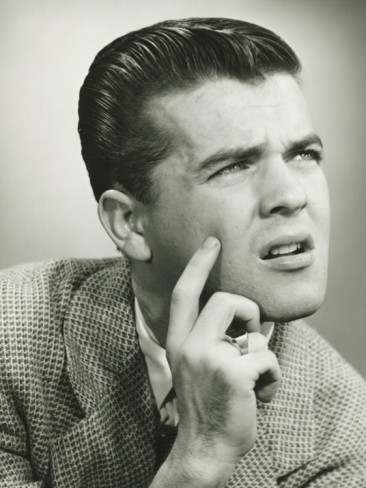 Whether you’re an amateur or professional, you may have been attracted to digital photography as a means to shoot casual and/or formal portraits. As with all types of photography, portraits consist of two learning curves: the technical and the compositional. Technical being how you set exposure and place your lighting and the compositional being how you pose the person in a portrait. This PhotographyTalk.com article will provide you with some tips about how to pose men and also poses for photography, specifically, to create images that please both you and your subjects.
Whether you’re an amateur or professional, you may have been attracted to digital photography as a means to shoot casual and/or formal portraits. As with all types of photography, portraits consist of two learning curves: the technical and the compositional. Technical being how you set exposure and place your lighting and the compositional being how you pose the person in a portrait. This PhotographyTalk.com article will provide you with some tips about how to pose men and also poses for photography, specifically, to create images that please both you and your subjects.
There are literally hundreds of ways to pose the human body that will result in excellent digital photos, from standing, sitting, lying on one side, lying flat on the floor, etc. The most important tip is to find those that flatter your subject. A person’s size, shape and age will determine which are the best photo poses. For example, you don’t want to shoot a large, or overweight, person from a low angle or tilt the head of a 60-year-old woman as much as a 16-year-old.
Most men will prefer digital photos that accentuate their masculinity, athletic prowess or profession. For younger men, that may mean posing them to show more of their body shape or even revealing their muscular torso. Other men may prefer to be dressed and posed formally, in a suit, similarly to a business or professional portrait. Others will want to be photographed in an outdoor setting to emphasize their ruggedness.
1. An important tip that applies to men and women is that the purpose of the portrait is to show your subject’s face, so avoid any pose or accessories that do so. This is particularly the case when shooting head-and-shoulders portraits. If you reveal other skin surfaces, even the arms, and certainly a man’s chest, then viewers’ attention will be diverted from the subject’s face.
2. Men look better with their bodies square to the camera, accentuating their broad shoulders and chest. Ask the subject to stand with his thighs half open.
3. You can pose a man either with his weight evenly distributed on either leg or both legs.
4. The best positions for a man’s arms and hands are either, as fists, with his thumbs in his front pockets or across his chest, with his hands on his forearms and his thumbs tucked under each arm. Another arm-and-hand pose to try is with the fingers flat in the back pockets and the thumbs outside the pockets. The arms and hands hanging straight from the shoulder or the hands crossed just below the belt are not pleasing. You can also check another post about poses for guys here.
5. Tip a man’s head towards the lower shoulder and not the higher shoulder, which is considered a feminine pose.
6. Ask your subject to drop his chin slightly.
7. In most cases, a man’s eyes should follow the direction of his nose.
8. Take notice of your male subject’s eyebrows. If they have distinctive characteristics, such as their shape, texture, thickness or color, then you don’t want to cover them. They help to define your subject.
9. If your subject is standing or sitting, then check that his back is straight.
10. If your subject is dressed in a suit or other formal attire, make sure it is not being worn for the first time. Ask him to wear a relatively new suit, but one that he has worn often enough to conform to his body better than a new suit would.
Get more great pointers on male portraiture in our article on the best photography poses for men.
For tips on how to pose women, read the PhotographyTalk.com article, Digital Photography—How To Pose Women for Better Portraits.
